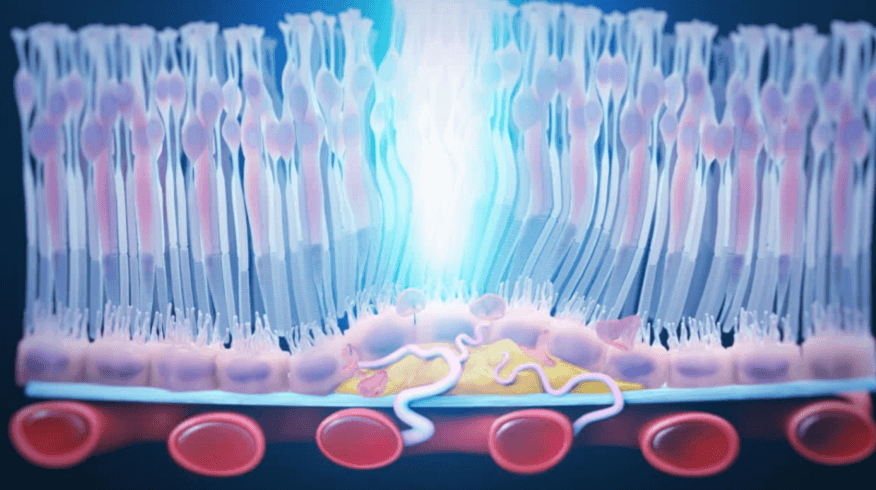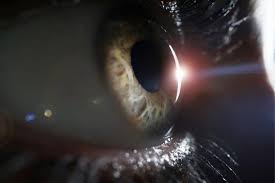
Photodynamic therapy (PDT) is a treatment for wet age-related macular degeneration (wet AMD). It is not used to treat dry AMD.
In photodynamic therapy, a light-sensitive medicine called verteporfin (Visudyne) is injected into the bloodstream. The medicine collects in the abnormal blood vessels under the macula. Laser light is then shone into the eye, which activates the medicine and causes it to create blood clots that block the abnormal blood vessels.
By sealing the leaky blood vessels, photodynamic therapy slows down:
Photodynamic therapy takes about 20 minutes and may be done in a doctor's office or eye clinic.
The verteporfin medicine used in PDT makes your skin and eyes more sensitive to light. After treatment, avoid direct sunlight for 2 to 5 days. And when you have to be outdoors, wear dark sunglasses to protect your eyes.
And when you have to be outdoors, wear dark sunglasses to protect your eyes.
Your doctor will want you to come back for a follow-up exam in about a month.

Photodynamic therapy is used to treat wet age-related macular degeneration (AMD) only. And PDT can only be used for a minority of cases.
By limiting the growth of abnormal blood vessels under the macula, photodynamic therapy may help prevent the progression of wet AMD. It does not restore vision to eyes that have already been damaged. But it may help prevent further damage to the retina and further vision loss.
Some experts think that photodynamic therapy may be more effective and less destructive than laser surgery. Laser treatment almost always causes some immediate, permanent central vision loss (a central blind spot). And laser treatment does not always prevent future growth of abnormal blood vessels. Photodynamic therapy may be better able to target the blood vessels without damaging the nerve cells in the retina and macula.
PDT can lower the risk of severe vision loss by reducing the growth of and leakage from abnormal blood vessels under the retina.2 How well the treatment works depends on where and how the abnormal blood vessels are growing beneath the retina. For some types of wet AMD, the treatment has no detectable benefit.
The effect of PDT in slowing the progress of AMD is often temporary, and the abnormal blood vessels begin leaking again after about 3 months. Most people need multiple treatments to get the full benefits of the therapy.
A severe loss in visual clarity happens to some people who are treated with PDT. In some cases, vision partially recovers.
Other side effects that may occur with PDT include:
Visit us at Insight Eye Clinic and experience unrivalled professional service from the moment you step in. We offer the best photodynamic therapy in Mumbai and assure our clients the highest quality eye care.
